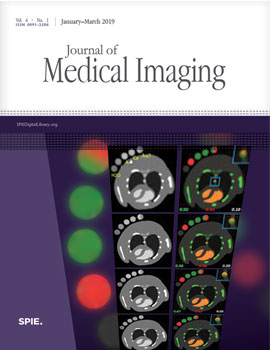Carina Jensen, Kristine Storm Sørensen, Cecilia Klitgaard Jørgensen, Camilla Winther Nielsen, Pia Christine Høy, Niels Christian Langkilde, Lasse Riis Østergaard
Journal of Medical Imaging, Vol. 6, Issue 01, 014501, (February 2019) https://doi.org/10.1117/1.JMI.6.1.014501
TOPICS: Image segmentation, Prostate, Scanners, Magnetic resonance imaging, Principal component analysis, Convolutional neural networks, Solids, Medical imaging, Distance measurement, Tissues
Zonal segmentation of the prostate gland using magnetic resonance imaging (MRI) is clinically important for prostate cancer (PCa) diagnosis and image-guided treatments. A two-dimensional convolutional neural network (CNN) based on the U-net architecture was evaluated for segmentation of the central gland (CG) and peripheral zone (PZ) using a dataset of 40 patients (34 PCa positive and 6 PCa negative) scanned on two different MRI scanners (1.5T GE and 3T Siemens). Images were cropped around the prostate gland to exclude surrounding tissues, resampled to 0.5 × 0.5 × 0.5 mm voxels and z-score normalized before being propagated through the CNN. Performance was evaluated using the Dice similarity coefficient (DSC) and mean absolute distance (MAD) in a fivefold cross-validation setup. Overall performance showed DSC of 0.794 and 0.692, and MADs of 3.349 and 2.993 for CG and PZ, respectively. Dividing the gland into apex, mid, and base showed higher DSC for the midgland compared to apex and base for both CG and PZ. We found no significant difference in DSC between the two scanners. A larger dataset, preferably with multivendor scanners, is necessary for validation of the proposed algorithm; however, our results are promising and have clinical potential.



 Receive Email Alerts
Receive Email Alerts